If you’re investing in Instagram marketing, you need to know how that investment is paying off. And while data like followers, likes, comments, and impressions are good indicators of page health, arguably the most important metric you should be tracking is engagement.
So how do you calculate Instagram engagement rate? Well there’s no real cut and dry answer simply due to the vast array of possible interactions your audience can have with your page. Link clicks, saves, DMs, all of these count as engagement. So you can see how calculating “true” engagement can get tricky.
That’s why today we’ll guide you through different methods for calculating Instagram engagement, what actions count as engagement and why engagement is so important in the first place.
Let’s dive in.
Why is Instagram engagement so important?
For many people starting out on Instagram, follower count is the golden metric. The more followers, the more people see your brand, the more leads you can push into your funnel. Right? Well actually no. If the followers you have aren’t interested in converting, those followers are useless.
And it’s easy to fall into that rut. Many brands fail to realize that Instagram should be used as a business tool. You’re a business owner, not an influencer. The content you share should be relevant to a very specific group of people, a group that you can actually convert into paying customers.
And the best way to gauge the effectiveness of your Instagram content strategy is by analyzing how many people are engaging with that content and in what way they are engaging. If you craft a piece of content that you want to be saveable and evergreen, measure the amount of saves, not just the amount of likes.
If you’re looking to increase the amount of comments, that’s a metric you should focus on.
We’ll go more into depth about how to calculate Instagram engagement rate in a minute.
But first, let’s talk about fake followers.
The fake followers discussion
Some of the biggest brands in the world make the same mistake of glamorizing their social media presence by buying fake followers.
Pilotfish has compiled a list of global companies that have purchased fake followers.
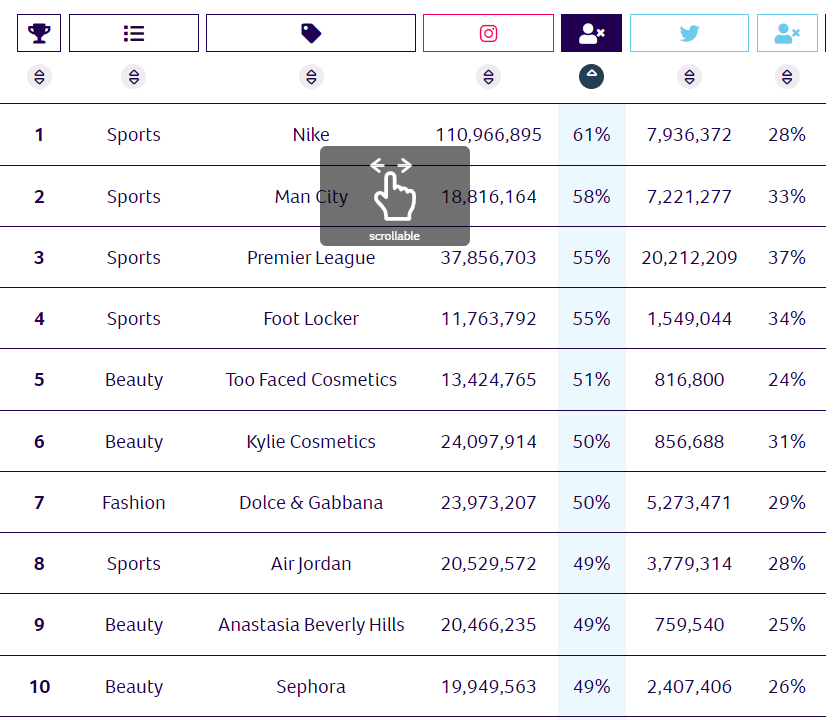
Fake followers hurt your page. This has been the consensus for a while now and yet many brands who are stuck with getting authentic engagement often resort to buying fake followers. Not only are fake followers immediately recognizable by anyone coming to your page, instantly hurting your brand’s image, Instagram’s community guidelines make it clear that fake followers will be purged on detection.
Long story short, don’t buy fake followers.
Instagram Engagement Formulas
Before we list some of the most popular Instagram engagement formulas, it’s important to understand the different metrics that go into these calculations.
We mentioned earlier how there are many possible interactions people can have with your page.
Different goals call for different metrics to be measured and the engagement rate will change in accordance to those metrics.
Here’s a list of possible engagement metrics to consider in your formula:
- Likes
- Shares
- Saves
- DMs
- Impressions
- Link clicks
- Story views
- Story replies
- In-story sticker taps
- Branded hashtag followers
- Mentions and tags
Engagement rate based on Reach
This formula is good for determining the efficacy of your content in relation to the reach your posts or your account gets.
There are two formulas you can use, one to measure the engagement rate for a single post and the other to measure the average rate across your entire profile:
- Formula 1 = (likes+comments) per post/ reach per post x 100
- Formula 2 = Formula 1 / total amount of posts
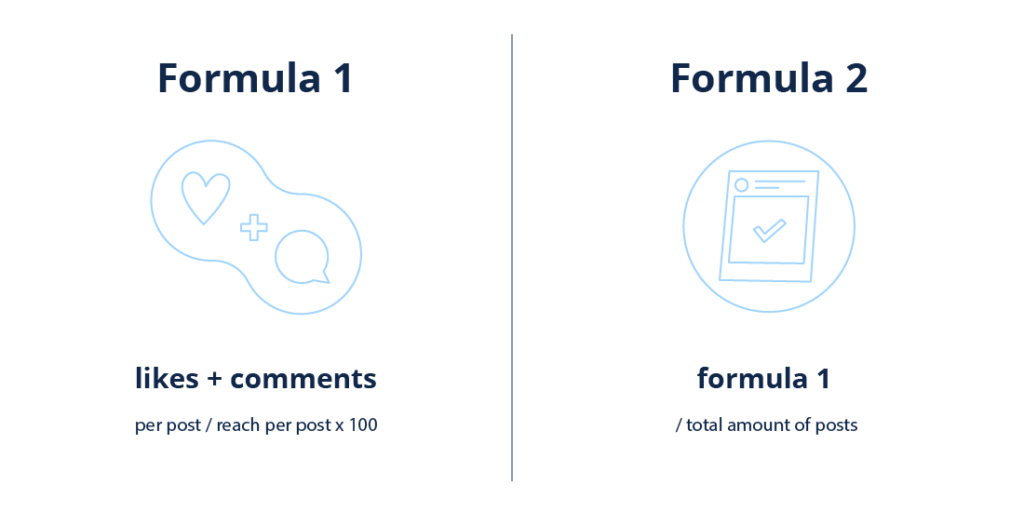
While this formula is good due to reach being a more accurate indicator than followers (not all of your followers will see all of your posts), reach can vary for different reasons that you can’t totally control.
Engagement / Followers
This formula is by far the most common and a lot of online tools use this equation, making it easy to benchmark your page against those of your competitors. The formula is simple:
Engagement Rate = (Total likes + total comments)/followers x 100
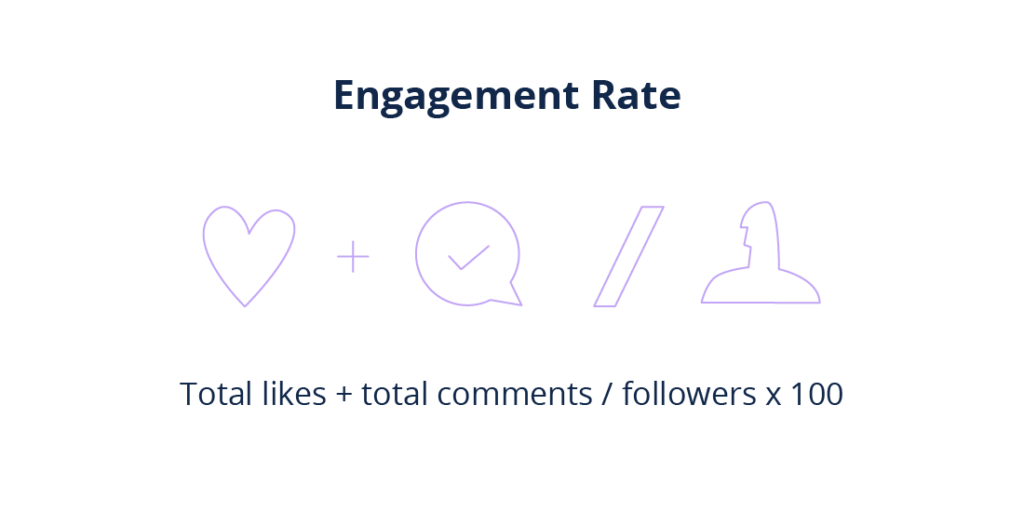
As we already mentioned, using followers as a key metric can be tricky since the algorithm won’t always show your content to all of your followers.The percentage of your followers who see your post/ your amount of followers is defined as your reach rate. Your reach rate can give you a good indicator of the overall health of your page.
Engagement/Impressions
Another popular engagement rate formula, this equation takes your engagement divided the amount of times your content has been displayed:
Engagement rate = (total likes+ total comments) / account impressions x100
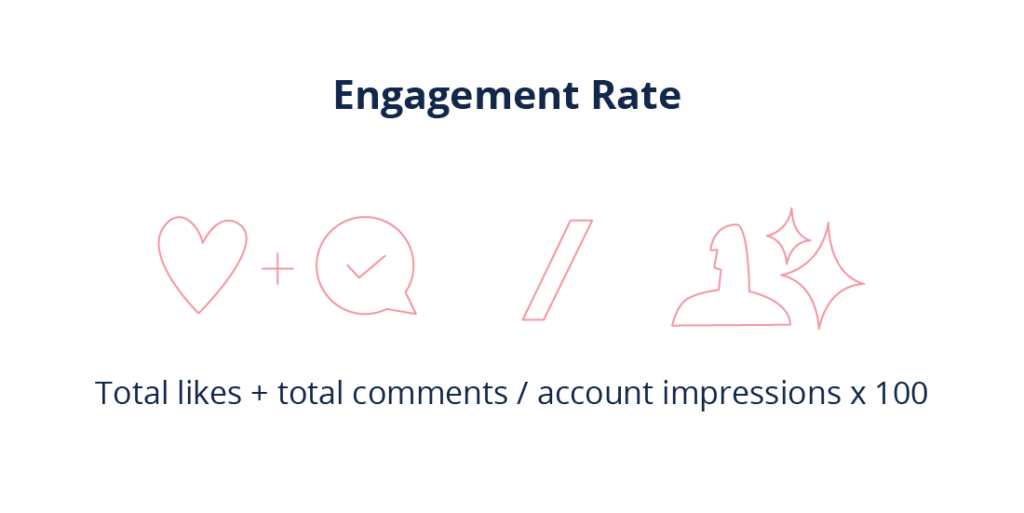
Impressions differ from reach in that impressions are the total number of times your content has appeared on a screen whereas reach determines the amount of people who have seen your content.
Impressions are a useful metric to track when determining ad efficacy. One key metric to keep an eye on when measuring things like ad fatigue is impressions and how they relate to your ad reach, frequency and CTR.
Total engagement/ Impressions
Total engagement includes likes, comments, saves and shares (if any). This benchmark can give you a holistic idea of how your content and page is performing.
Engagement rate = (total likes + total comments + total saves + total shares) / account impressions x 100
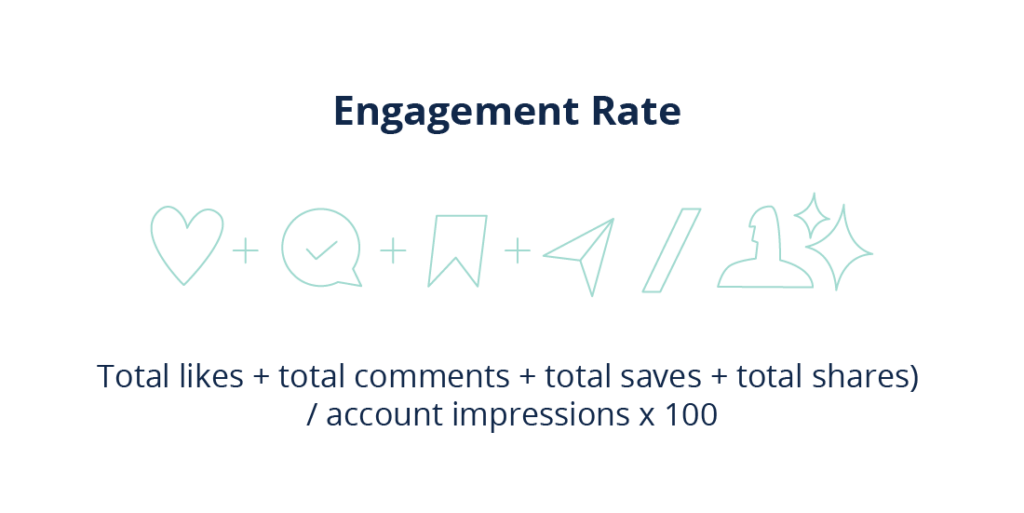
Things to consider when calculating engagement rate on Instagram
While quantitative data is needed to calculate engagement rate, qualitative data also needs to be analyzed in order to get an idea of your true engagement. The great part about qualitative analysis is that you can customize based on your short or long-term goals.
Refer to the list of possible interactions we listed earlier and choose an objective that fits within your strategy.
For example, if you created a piece of content that aims to increase the amount of comments, check the comments (if any) under that post.
What are people saying? Are there any bots commenting? Are people providing quality feedback? This kind of qualitative analysis can be applied for DM’s, mentions and hashtags as well.
With the amount of bots and spam comments plaguing Instagram lately it’s important not to rely solely on hard numbers, but also how those interactions are affecting your overall business goals.




